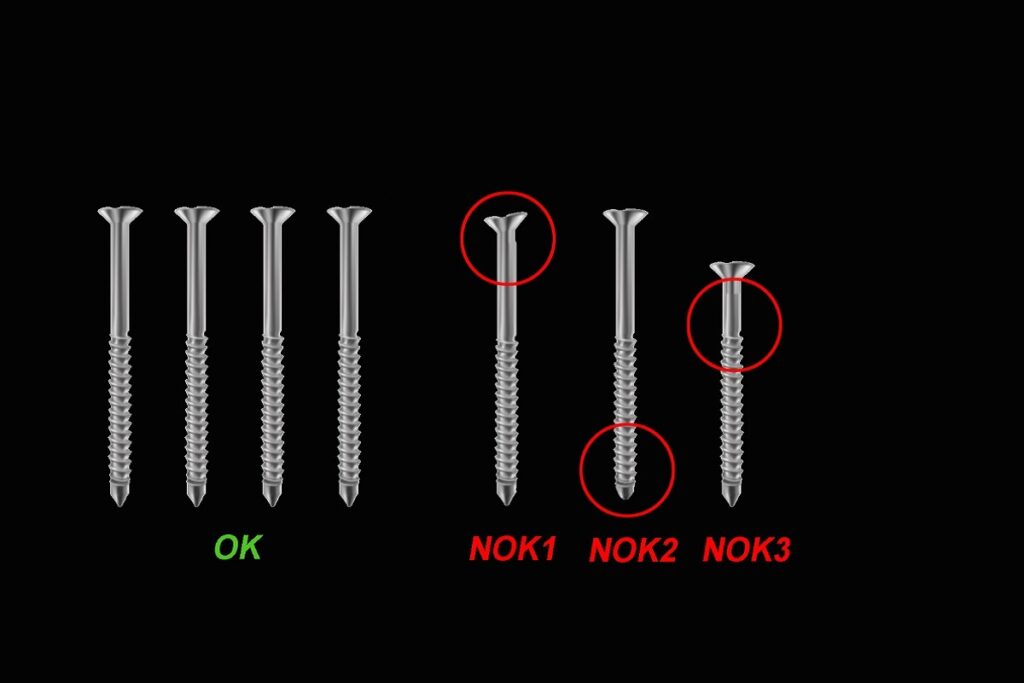A recent headline in the trade publication IndustryWeek about implementing AI on the shopfloor started out as quite the downer ”AI Has a Poor Track Record” it read. The qualifier that followed eased the pain a bit “Unless You Clearly Understand What You’re Going for”.
Let’s focus on the qualifier because if you do understand what you are going for and what it takes to get there, your chances of a successful AI implementation in your manufacturing plants are excellent.
Over the last couple of years, we have implemented AI systems on the shopfloor of a number of global manufacturers of fast-moving consumer goods and automotive parts. We learned a great deal about what it takes to make these implementations successful. Here are the top four lessons we learned.
Lesson 1: Pick an easy application to get started
AI can be very powerful and you probably have read quite a bit about exciting applications that solve complex problems. However, the way to get started is to fully embrace the “keep it simple” principle. Select an application that ensures early success, allows the organization to get familiar with the AI, and paves the way for large implementations addressing more complex problems later.
Understand what you are going for: In our experience, visual quality inspection is an excellent first application. Images might not be the first data stream that comes to mind but they have distinct advantages: images are easy to take, store and work with. Generally, you will just have one data format, e.g. jpg, tiff or png, so you don’t have to worry about converting formats. Many excellent algorithms for image analysis already exist that can serve as a starting point.
Your ultimate goal might be a completely different application, but starting with visual inspection gives you crucial experience with AI implementation projects and adds value to your operations.
Lesson 2: Take a stepwise approach
Artificial intelligence models learn similar to humans, by “seeing” lots of examples. With an average scrap rate of less than 2% most manufacturers will have no problem showing the algorithm golden units so they can learn what a perfect product looks like. Simple anomaly detection where the algorithm learns to differentiate between an OK and a NOK product is therefore a great way to start.
The situation is different for defect categorization, especially if you want to categorize rare defects. Initially, most manufacturers will simply not have enough examples of defective units for the algorithm to be able to categorize them reliably. But the problem will solve itself over time as additional defective products are detected, categorized by experienced personnel, and used to retrain the model.
Understand what you are going for: Instead of trying to go from zero to detailed defect categorization right away, start by differentiating between good and defective units and add increasingly detailed defect categorization over time as the model sees enough examples of various defects to differentiate them reliably.
Lesson 3: Develop your data strategy
About 80% of an AI implementation is getting the data needed to train the algorithms. If this sounds high, trust me, it is probably an understatement. It always surprises me, how many large manufacturers in the year 2022 store their data in spreadsheets where critical information lingers in obscurity unless an analyst spends days to weeks extracting it.
In general, there are two challenges that can delay your fledgling AI project significantly: either you don’t have the needed historic data because they were never collected, or (and this is virtually certain) your data will need significant work before the algorithms can use it.
Understand what you are going for: If you are serious about implementing AI you don’t just need an AI roadmap, you need a data strategy. This is a time-consuming undertaking that you want to start in earnest before you embark on your first AI implementation. This means collecting and cleansing the historic data that is required to build your first model, and/or starting to collect the needed data if they haven’t done so before.
Lesson 4: You can’t compete for talent with Google, Facebook, Apple or Amazon
As a manufacturer, you will not be able to hire the data scientists everybody says are needed to implement AI. You simply can’t compete with the big tech companies when it comes to salary and perks. I read the following stark statement in a blog recently:
“Microsoft has $130B of cash on hand. The company can afford to hire 10,000 data scientists at $600K per year on the interest it earns from its cash war chest.”
Kevin Dewalt, The AI talent crisis is real — and unlike the dot-com era
This critical talent shortage, unfortunately, is not likely to resolve itself any time soon.
Understand what you are going for: Since you can’t get that MIT Ph.D. data scientist, you need a different strategy. We are seeing some of our customers adopting a two-pronged approach:
- focus on upskilling the people they have, e.g. by enrolling selected employees in high-quality AI courses (I am talking MIT/Stanford type professional training, not a community college AI 101 course)
- work with an AI solution provider who understands the demands and challenges of manufacturing and has developed a solution that can be implemented, integrated, maintained and expanded with these newly minted AI resources rather than requiring experienced data scientists.
With Six Sigma maxed out, the next wave of improvements and cost savings in manufacturing will come from AI. Specifically, predictive maintenance and quality inspection stand to gain from the adoption of AI-based solutions. With the right approach and diligent planning, implementing AI on the shop floor is entirely doable and your track record of doing so can be excellent.
I am happy to discuss this in more detail. Just contact me if you have any questions about how to successfully implement AI in your plant.
